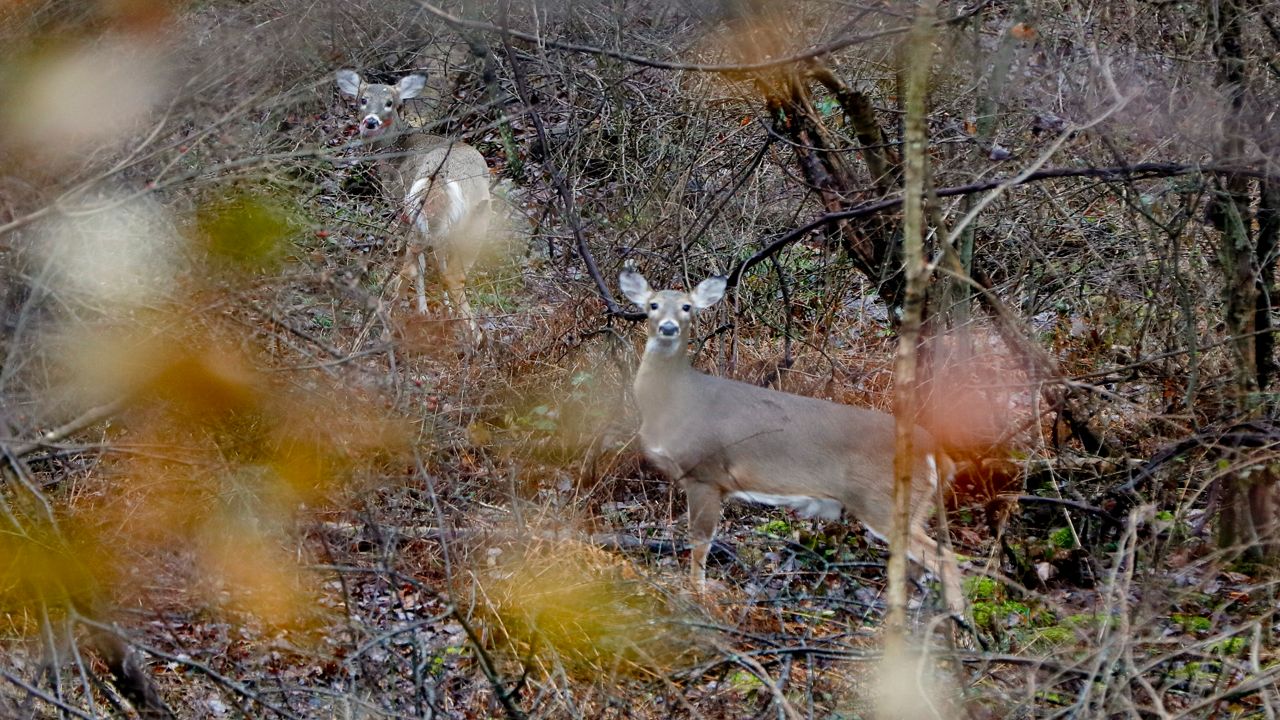COLUMBUS, Ohio — Researchers from Ohio State University said on Thursday that deer in multiple northeast Ohio locations had evidence of antibodies for COVID-19, indicating the deer had been infected by the virus.
The testing was conducted from January to March 2021, which researchers noted was before the delta variant began widely circulating through Ohio’s human population. The delta variant was not detected in these deer.
The fact that wild deer can become infected “leads toward the idea that we might actually have established a new maintenance host outside humans,” said Andrew Bowman, associate professor of veterinary preventive medicine at Ohio State and senior author of the paper.
Ohio State officials said a research team took nasal swabs from 360 white-tailed deer in nine northeast Ohio locations. Ohio State said at least three different strains of the virus were found in 129 (35.8%) of the deer sampled.
Prevalence of COVID-19 antibodies were greater among deer sampled near densely populated neighborhoods.
“The virus could mutate in deer, potentially facilitating transmission of new strains to other species, including humans, or the virus could survive in deer unmutated while it simultaneously continues to evolve in humans, and at some point when humans don’t have immunity to the strains infecting deer, those variants could come spilling back to humans,” Ohio State officials said in a press release.
While it’s unclear exactly how the deer became infected, researchers speculated that the deer became infected through an environmental pathway, such as drinking contaminated wastewater. OSU researchers noted that COVID-19 samples have been detected in human stool and wastewater.
“The working theory based on our sequences is that humans are giving it to deer, and apparently we gave it to them several times,” Bowman said. “We have evidence of six different viral introductions into those deer populations. It’s not that a single population got it once and it spread.”
Ohio has an estimated population of 600,000 white-tailed deer.
According to the Ohio Department of Natural Resources, 79,805 deer were harvested during the state’s deer gun hunting season, which ended on Sunday. Archery hunters have checked 82,145 deer through Sunday, Dec. 19, according to ODNR.
Northeast Ohio is currently among the hardest-hit areas in the U.S. for COVID-19 cases and hospitalizations. Nationwide, Cuyahoga County ranks among the top five places for COVID-19 cases, according to data from the New York Times. The county currently stands at No. 2 with an average of 236 cases per 100,000 people. Lake County is at No. 8 with 152 cases per 100,000 people.



